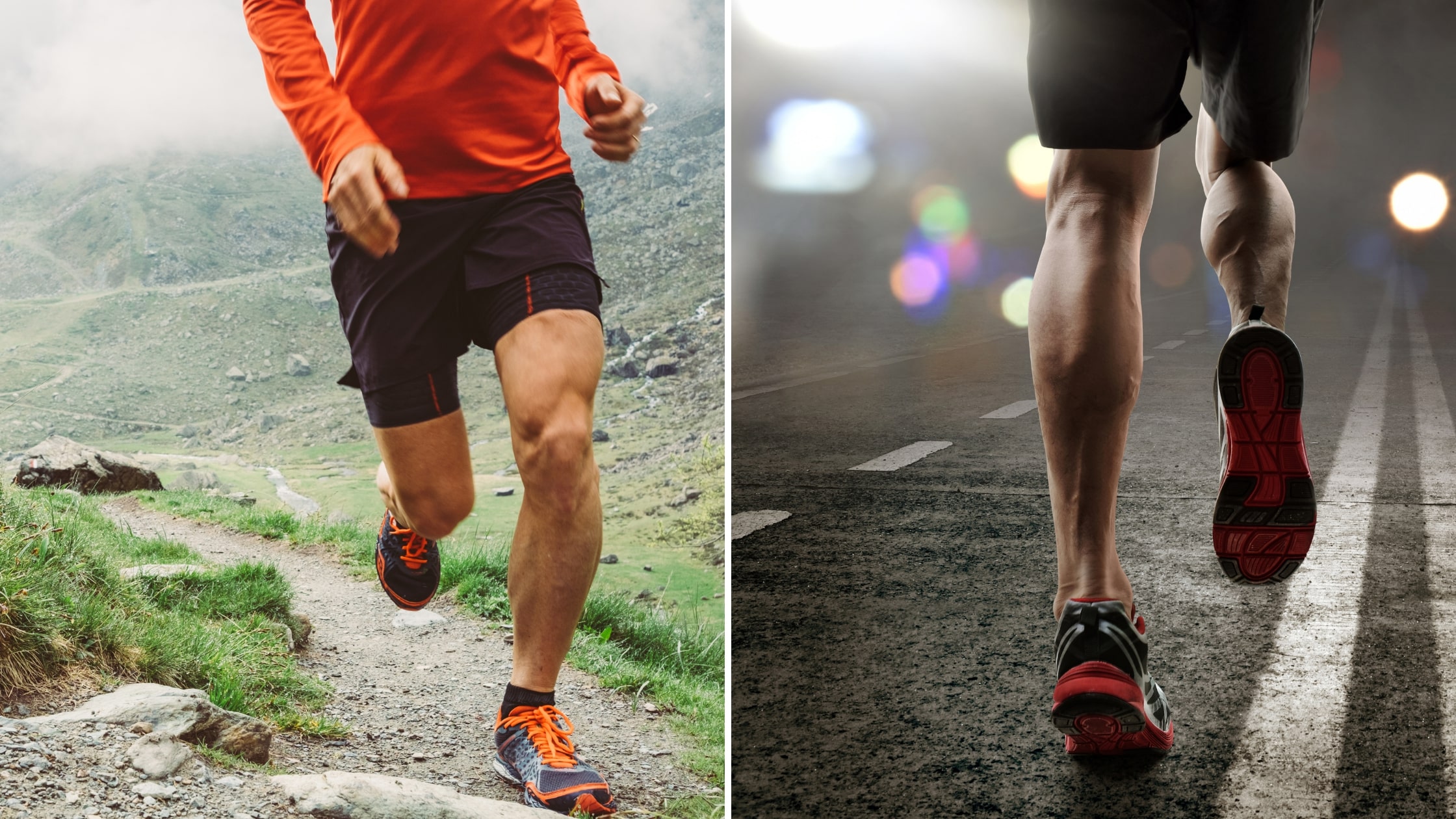Road runners who want to transition to trail running may think of it as an ideal way to combine their love for running with the scenic outdoors. Many runners may not realize it at first, but there are many key differences between road running and trail running and it’s not as simple as stepping from pavement to dirt.
The main differences between road running and trail running are that the latter requires different techniques and preparation, as it’s more technical. Diverse terrain and surfaces, and natural features like creeks and hills, which runners experience on an outdoors trail, make for an experience that can sometimes differ drastically from running on fairly steady, paved road surfaces.
Due to that fundamental difference and many more, those who wish to add trail running to their routine may want to consider a few factors before gradually making the transition.
Start off Easy on the Trail
Moving from the road to trail running can take time. Runners will need to get different shoes, train differently and get used to navigating outdoor paths.
Anytime a runner transitions to a natural path, more stress is put on the mind and the body. Outdoor paths are often more physically demanding with uneven and steep inclines. Runners will burn more calories, but they won’t necessarily hit the same mileage on trails as they do on roads, (at least, not immediately.) It can often take several weeks to form the techniques that make trail running less strenuous on a runner’s body and avoid unnecessary injuries.
One of the biggest challenges is starting to pay more attention to the terrain, your footing and even wildlife you encounter along the way. It takes slightly more mental capacity to pay more attention to the trail since the stride will change as a trail’s surface changes.
Most running gear can be used on both roads and trails, but it’s important that runners trade out their shoes. Running shoes made for the road are more lightweight and designed for speed when running on pavement surfaces. When you move to a trail, runners will need shoes that provide stability, traction and durability to protect the feet from surfaces that often have rocks, roots, mud and sand.
More technical terrain may call for huge tugs at the soles, but many shoes are specifically made for more difficult trail terrain, like the Altra Superior or Adidas Terrex Speed Shoe. There’s also specific terrain shoes made for women. Visiting a local running store can point new trail runners in the right direction and the employees there will likely be familiar with the trails to offer advice on buying the most protective types of running shoes.
The Importance of Strength Training
Regardless of road running or trail running, all runners should start lifting weights. Strength training helps prevent injuries and increases mobility and speed while running. Trail running, especially, uses many of the tiny muscles that tend to feel the impact of bouncing off rocks. They also help stabilize the body on uneven surfaces and control fast changes in pace.
Strength routines should focus on hip strength and include body weights, bands, dynamic warm-ups and plyometrics. Core strength routines like planks and movement that stimulates the lower back are also necessary to build durability for trail running. Additionally, upper body exercises like pushups can easily target multiple muscle groups at once. If runners focus on adopting a regular strength training program three to four times a week, on top of adding in mobility and stability during their workouts, trail running will become easier.
As trail runners develop their training, they can also try out other techniques. A major goal for safe trail running is to avoid spending too much time with the feet on the ground. Short strides can help control speed and reduce the risk of falling and injury, especially downhill. According to a 2016 French study, forefoot strikes (which can come more naturally with a faster cadence) help reduce the terrain’s impact on each step compared to hitting the hell on the trail. Another study in Sports Biomechanics also showed that implementing slowing down uphill will reduce the strain on the shin bone.
As trail runners develop their skills and focus on becoming more agile in their techniques, trail runners often improve their endurance and wellbeing. Of course, those scenic views can’t hurt either. Happy running!







